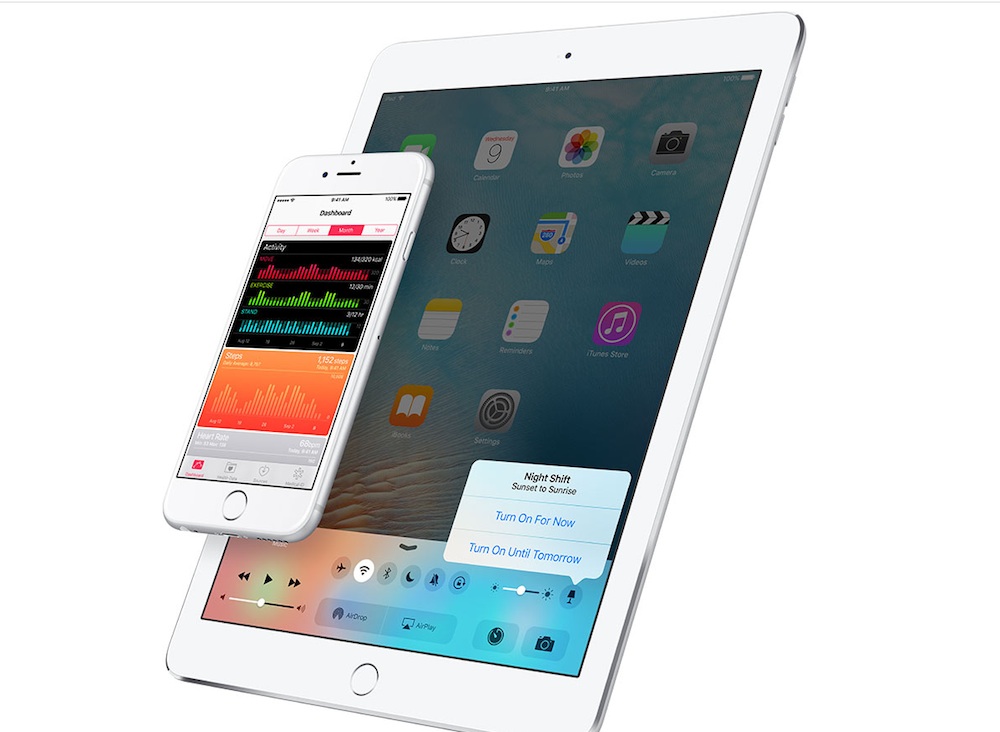Can Apple's 'Night Shift' Really Help You Sleep Better?

A new iPhone feature called "Night Shift" automatically adjusts the screen’s colors to warmer hues after sunset, on the premise that this change could help people sleep better.
However, experts say that, although it's theoretically possible that the feature could help people sleep, the idea is speculative for now, because there are no studies to back up the claim.
Night Shift is now available as part of Apple's latest mobile operating system update, iOS 9.3, which was released Monday (March 21). The feature uses the iPhone or iPad's clock and geolocation services to determine when sunset is happening in your area, and then automatically adjusts the screen's colors to redder, or warmer, colors, Apple says.
The company introduced the feature because studies show that exposure to light at nighttime — especially blue light, which dominates the light emitted by electronic devices — can interfere with sleep. That's because exposure to light suppresses the production of melatonin, a hormone that signals to the body that it's time to sleep. And blue light seems to be particularly effective at suppressing melatonin.
A 2015 study found that people who read a book on an electronic screen (e-book) before bedtime took about 10 minutes longer to fall asleep and reported feeling less sleepy at bedtime, compared to people who read a regular print book.
The study also found that evening melatonin levels were suppressed by about 55 percent in the people who read e-books, while those who read a print book didn't experience melatonin suppression.
"When people are exposed to blue light from TV screens and computers and artificial light," studies show that their sleep is disrupted, said Dr. Alon Avidan, a professor of neurology and director of the Sleep Disorders Center at the University of California, Los Angeles.
Get the world’s most fascinating discoveries delivered straight to your inbox.
"[So] when you reduce the amount of light that’s bad for you, and you screen out those blue rays, then theoretically you get better sleep," Avidan told Live Science. "However, we don’t have good data to show that that’s in fact what's going to take place" if people turn on Apple's new feature, he said. [5 Sleep Tips for Gadget Junkies]
Avidan said it would be interesting to evaluate Night Shift in a scientific study, to see if it can in fact affect how well people sleep.
In the meantime, Avidan recommends that people do not use their electronic devices right up until bedtime.
"It's not a natural thing to do. We're not evolved to work on a computer until we fall asleep," Avidan said. "And all this light pollution is likely going to have a detrimental health effect that is not conducive to our sleep-wake cycle."
Avidan also noted that it's not just the light from electronic devices that can affect sleep — using these devices can also make it hard for people to "shut their mind off" before bedtime. So people should be aware that just using Night Shift "doesn’t immunize them from having a sleep or circadian disorder," Avidan said.
Follow Rachael Rettner @RachaelRettner. Follow Live Science @livescience, Facebook & Google+. Original article on Live Science.

Rachael is a Live Science contributor, and was a former channel editor and senior writer for Live Science between 2010 and 2022. She has a master's degree in journalism from New York University's Science, Health and Environmental Reporting Program. She also holds a B.S. in molecular biology and an M.S. in biology from the University of California, San Diego. Her work has appeared in Scienceline, The Washington Post and Scientific American.


